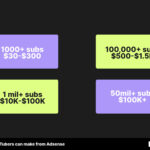Investing in foreign currencies can be an intriguing prospect, especially when the narrative involves potential economic resurgence. The Iraqi dinar (IQD) is one such currency that has captured the attention of some investors, fueled by hopes of Iraq’s recovery and increased oil revenues. But is investing in Iraq Money a sound financial strategy, or a high-stakes gamble? This article delves into the realities of investing in the Iraqi dinar, exploring its history, potential, and significant risks for those considering adding it to their portfolio.
Understanding the Iraqi Dinar’s Story
The story of the Iraqi dinar is closely tied to Iraq’s turbulent modern history. Before the 1991 Persian Gulf War, the dinar held a relatively strong value, pegged at around $3 USD. However, the subsequent years brought economic hardship, marked by UN sanctions and internal instability under Saddam Hussein’s regime. Rampant inflation and speculative pressures eroded the dinar’s value dramatically, plummeting to less than a penny by 1993. The hyperinflation of 1994, exceeding 448%, further decimated its worth.
/iraqi_dinar_1-5c683459c9e77c0001774401.png)
Image: A stack of Iraqi Dinar banknotes, illustrating the physical currency.
Following the 2003 U.S.-led invasion and the overthrow of Saddam Hussein’s government, Iraq embarked on a path toward rebuilding. A new Iraqi dinar was introduced in 2004, replacing the old currency at par value. The backing of international powers for the new government sparked optimism for economic recovery, particularly after years of isolation in the 1990s. By 2007, the International Monetary Fund (IMF) acknowledged Iraq’s progress in curbing inflation, noting the Central Bank of Iraq’s interest rate hikes and a gradual appreciation of the dinar.
This perceived economic turnaround led to increased speculation, with some investors purchasing Iraqi dinars hoping for a significant rise in value, drawing parallels to Kuwait’s currency after the Gulf War. However, this optimism has been punctuated by periods of economic stress. In late 2020, a severe liquidity crisis, worsened by falling oil prices and the COVID-19 pandemic’s economic fallout, forced the Iraqi government to devalue the dinar by over 20%. This devaluation triggered public protests, highlighting the fragility of Iraq’s economic situation.
More recently, in January 2024, Iraq implemented a ban on cash withdrawals and transactions in U.S. dollars. This measure, according to the Central Bank of Iraq, aims to combat the misuse of foreign currency reserves in financial crimes and to enforce U.S. sanctions against Iran, while also promoting the use of the Iraqi dinar within the domestic economy.
The Allure and Pitfalls of Iraqi Dinar Investment
Iraq possesses substantial oil reserves, holding 11.7% of global reserves as of 2023. This natural resource wealth presents a foundation for potential economic growth, mirroring the development of other Middle Eastern economies. If Iraq can achieve political stability and implement reforms to foster a more attractive business environment, investor confidence and economic progress could follow.
/oil_reserves_in_iraq_2-5c683957c9e77c0001774484.png)
Image: An oil field in Iraq, representing the country’s significant oil reserves.
However, investing in Iraqi dinar as a way to capitalize on this potential recovery comes with significant caveats. The Iraqi dinar’s exchange rate is not determined by market forces but is fixed by the Central Bank of Iraq. This fixed exchange rate regime means that even if Iraq’s economy improves, rapid appreciation of the dinar is unlikely. More conventional investment routes, such as Iraqi stocks (if accessible), could offer returns independent of dinar revaluation.
Furthermore, the Iraqi dinar market suffers from extremely low liquidity. It is not traded on major global forex markets, and only a limited number of banks in the Middle East engage in IQD transactions. Acquiring Iraqi dinars typically involves using money exchangers, often unregistered, who levy substantial fees, sometimes as high as 20%, significantly reducing potential profits.
The most significant concern surrounding Iraqi dinar investment is the prevalence of scams and fraudulent schemes. U.S. regulators have issued warnings for over a decade about “brokers” promoting Iraqi dinar “investments” with promises of high returns, while charging excessive fees and making it difficult to resell the currency. These scams gained traction after the 2016 U.S. elections, fueled by unfounded rumors of a dramatic dinar revaluation under the Trump administration.
Pros and Cons of Investing in Iraq Money
Pros:
- Potential for Economic Growth: Iraq’s vast oil reserves could drive future economic expansion.
- Viable for Iraq-Based Individuals/Businesses: Holding dinars might be practical for those living, working, or conducting business in Iraq.
Cons:
- Low Liquidity: The IQD market has minimal trading volume.
- Fixed Exchange Rate: The Central Bank of Iraq sets the exchange rate, limiting potential for appreciation.
- Scam Risk: Numerous scams target investors with overpriced IQD “investment packages.”
- Limited Trading Access: Trading is primarily through high-fee money exchangers, not global forex markets.
Key Facts About the Iraqi Dinar
Current Value: As of January 31, 2025, one U.S. dollar (USD) is equivalent to 1,309 Iraqi dinars (IQD).
Exchange Rate Authority: The Iraqi government, through its central bank, dictates the dinar’s exchange rate.
Trading Venues: The Iraqi dinar is not traded on global forex markets and is primarily accessible through money exchangers or select Middle Eastern banks.
The Bottom Line: Proceed with Extreme Caution
The future trajectory of Iraq’s economy and the Iraqi dinar exchange rate remains uncertain and speculative. For investors outside of the Middle East, holding Iraqi dinars presents challenges in terms of trading and earning interest. While a future dinar revaluation is theoretically possible, it is a long-shot bet with considerable risk, especially given the ongoing instability in the region.
Investing in exotic currencies like the Iraqi dinar is inherently risky and should be approached with extreme caution. The lack of regulation, combined with the history of scams, makes Iraqi dinar investment unsuitable for most investors. There are numerous alternative investments that offer better risk-reward profiles and greater liquidity. Unless you have a very specific reason and a high-risk tolerance, investing in Iraq money is generally not recommended.

